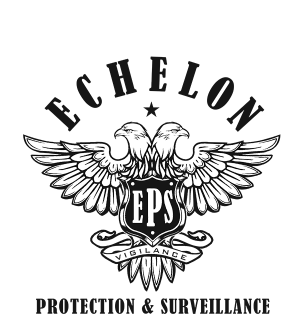
Here’s a guide to conducting an effective security assessment for major events.
Assess the Venue’s Suitability
Before finalizing a location, conduct a venue security assessment to determine potential risks and vulnerabilities. Key considerations include:
- Capacity and Layout: Ensure the venue can handle the expected crowd without overcrowding. Identify choke points, emergency exits, and pathways for security personnel.
- Surrounding Environment: Consider nearby high-crime areas, protest risks, or heavy traffic zones that could impact event security.
- Access Points: Evaluate entry and exit locations, making sure they can be monitored and controlled effectively.
- Existing Security Infrastructure: Check for security cameras, alarm systems, emergency lighting, and first-aid stations that can be integrated into the event’s security plan.
A detailed venue risk assessment helps determine what additional security measures need to be implemented.
Identify Potential Threats and Vulnerabilities
Once the venue is assessed, the next step is to identify and categorize risks. These may include:
- Unauthorized Access: Events with VIPs, celebrities, or high-profile speakers may attract individuals attempting to breach security.
- Crowd Management Issues: Overcrowding, fights, or stampedes can lead to injuries if not properly controlled.
- Terrorism & Active Threats: Large public events can be targets for violence or terrorist attacks.
- Cybersecurity Threats: Digital ticketing systems, event databases, and online registrations must be protected from hacking attempts.
- Weather & Environmental Risks: Outdoor events need contingency plans for extreme weather, fire hazards, or power outages.
Using a risk matrix to assess likelihood vs. impact can help prioritize security measures.
Create an Emergency Event Plan
A well-structured emergency response plan ensures that security teams, staff, and emergency responders act swiftly in the event of an incident. Key components include:
- Evacuation Routes & Assembly Points: Clearly marked exits and designated safe zones should be established.
- Emergency Medical Services: Trained first aid and CPR-certified personnel should be available, along with designated first aid stations.
- Communication Systems: Security teams must have two-way radios, mass notification systems, and direct contact with local law enforcement.
- Incident Reporting & Response: Security teams must be trained in de-escalation tactics, crisis intervention, and emergency lockdown protocols.
- Coordination with Authorities: Work with law enforcement, fire departments, and emergency medical responders to align security protocols.
Regular emergency drills and tabletop exercises should be conducted before the event to test response effectiveness.
Build an Event Security Plan
Once threats and emergency plans are in place, create a comprehensive event security plan that includes:
1. Trained Security Personnel
- Deploy armed or unarmed security guards depending on event needs.
- Assign plainclothes officers to blend in and monitor for suspicious activity.
- Train personnel in de-escalation, conflict resolution, and emergency response.
2. Crowd Control Measures
- Use barriers, wristbands, and checkpoints to regulate access.
- Implement staggered entry and exit strategies to prevent bottlenecks.
- Assign staff to monitor high-traffic areas and ensure pathways remain clear.
3. Access Control & Screening
- Utilize metal detectors, bag checks, and RFID ticket scanning to prevent unauthorized entry.
- Implement a VIP access management system with separate secure areas.
- Train staff to recognize fake credentials or suspicious behavior.
4. Surveillance & Monitoring
- Set up temporary CCTV surveillance to cover parking lots, entrances, and stage areas.
- Deploy drone monitoring for large-scale outdoor events.
- Use real-time incident tracking software for enhanced security management.
5. Cybersecurity Protocols
- Encrypt online registration and ticketing systems to prevent data breaches.
- Secure Wi-Fi networks used for event operations.
- Monitor social media for potential security threats.
Ensure Your Event Goes Smoothly with EPS
A well-executed on-site security assessment is critical for preventing threats, managing emergencies, and ensuring a safe event experience. By evaluating the venue, identifying risks, developing emergency plans, and implementing a strong security strategy, event organizers can minimize liabilities and enhance safety.
At Echelon Protection & Surveillance (EPS), our certified event security professionals provide customized security solutions, including crowd management, access control, and emergency response planning. Contact us today to secure your next major event with expert protection and peace of mind.


